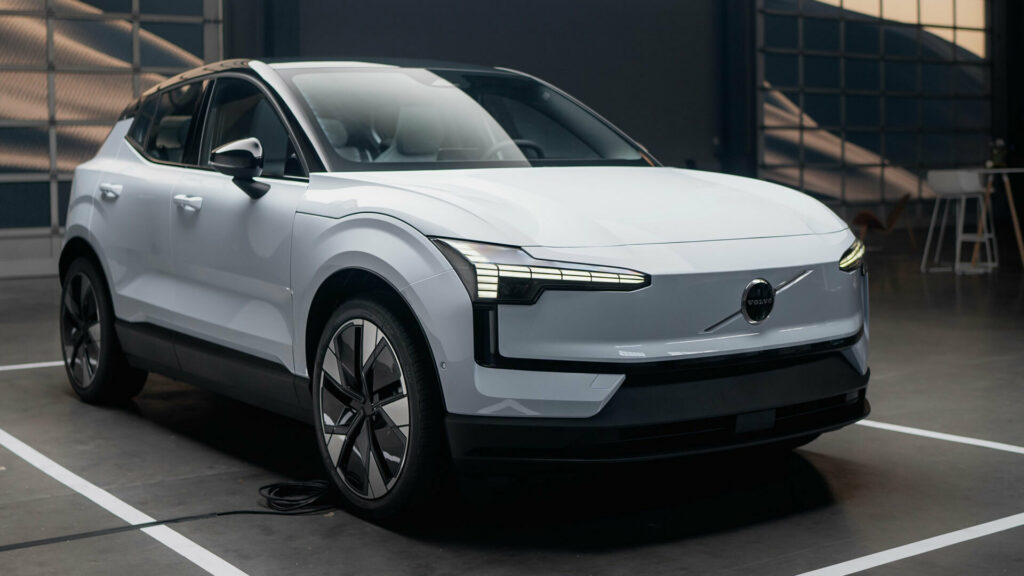- Volvo is reversing course once again and revealing the EX30 will land at U.S. dealerships late this year.
- The EX30 Twin Motor Performance will be the first to arrive and cost $44,900.
- Twin Motor variants have 422 hp and an EPA range of 253 miles.
Volvo introduced the EX30 in the summer of 2023 and it was originally slated to arrive in America this year. However, things apparently got derailed by higher tariffs on Chinese EVs.
While Volvo didn’t come out and state the obvious, the automaker cited “changes in the global automotive landscape.” The company added that models bound for America would now be built in Ghent, Belgium instead of Zhangjiakou, China.
More: The 2025 EX30 Is Volvo’s Smallest And Fastest Model Ever, Starts At $34,950
This would enable the automaker to avoid hefty tariffs, but it was originally slated to push the U.S. launch back to 2025. However, the EX30 is getting here earlier than expected as Volvo announced deliveries will begin late this year.
Customers who preordered the model are being invited to configure their electric crossover and Volvo said “deliveries of select examples” will begin in the coming weeks. Specifics are few and far between, but the automaker is prioritizing the pricey EX30 Twin Motor Performance which starts at $44,900.
The company said they’re doing this in “response to strong consumer demand.” The Single Motor variant is slated to follow in 2025 and that will be the one to watch as pricing begins at $34,950.
As a refresher, the EX30 Twin Motor Performance has a 69 kWh battery pack that feeds a dual-motor all-wheel drive system producing 422 hp (315 kW / 428 PS) and 400 lb-ft (542 Nm) of torque. This enables the crossover to accelerate from 0-60 mph (0-96 km/h) in 3.4 seconds and have an EPA range of 253 miles (407 km). When low, a 153 kW DC fast charging capability enables the battery to go from a 10% to 80% charge in roughly 26 minutes.
The EX30 Single Motor Extended Range is similar, but it features a rear-mounted motor developing 268 hp (200 kW / 272 PS) and 253 lb-ft (343 Nm) of torque. This results in a slower 0-60 mph (0-96 km/h) time of 5.1 seconds, but a longer range.


























